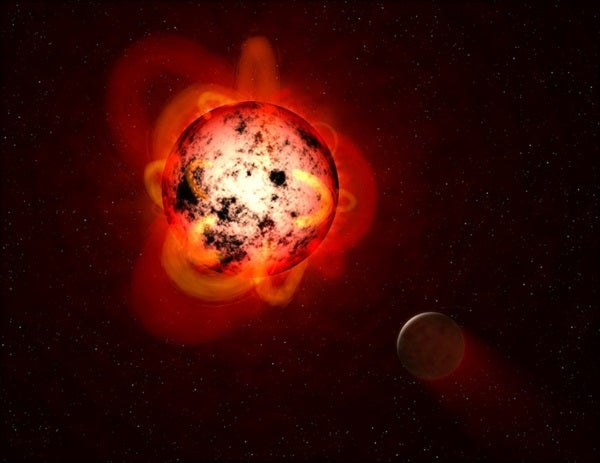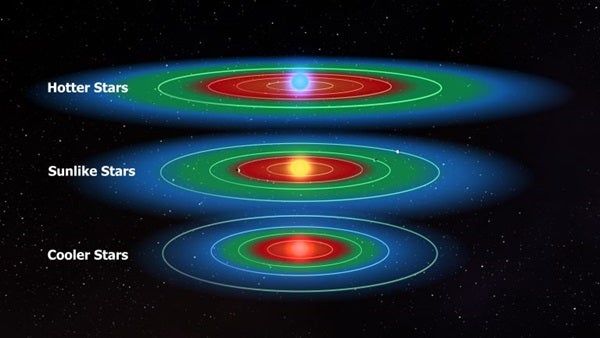Because these stable stars are relatively cool (around 7,000 degree Fahrenheit) and live exceptionally long (trillions of years), it may seem like they would be the perfect places to hunt for habitable exoplanets. However, according to new research presented on April 3 at the European Week of Astronomy and Space Science in Liverpool, red dwarfs may be much more inhospitable to life than we previously thought.
The problem lies in the fact that red dwarfs are so darn cool. For any exoplanet to get enough heat to be in a red dwarf’s habitable zone — the region around a star where liquid water can exists — the planet must sit extremely close to the star itself. And since red dwarfs often emit large radiation flares, spew out charged particles, and undergo coronal mass ejections (CMEs; think plasma torpedoes), being near one is a risky proposition.
In February 2018, the researchers observed a large flare coming from the red dwarf AD Leo, located 16 light-years away in the constellation Leo. This star is particularly intriguing because it is known to have a giant planet orbiting it at a distance of about 1,900,000 miles (3,000,000 kilometers) — or 50 times closer than the Earth is to the Sun. Additionally, AD Leo may have more Earth-sized worlds farther out, which would place them within the star’s habitable zone.
Although the research is still in its early stages, the team’s initial results indicate that the giant planet was relatively unaffected by the red dwarf’s powerful flare. This is largely due to the fact that the flare was not accompanied by a CME, as is usually the case with similar flares from the Sun. This is a relief for any hypothetical, Earth-size planets located farther away from AD Leo, as CMEs are capable of stripping away the atmospheres of smaller planets.
There’s the good news, but here’s the bad: the X-ray radiation associated with the flare-up would have cut through an Earth-sized planet’s atmosphere like a hot knife through butter. This means that copious amounts of harmful X-rays would penetrate straight down to the surface of any potential exoplanet in the habitable zone around AD Leo, effectively sterilizing the entire planet.
“Astronomers are mounting a global effort to find Earth-like worlds, and to answer the age-old question of whether we are alone in the Universe,” said Guenther in a press release. “With sporadic outbursts of hard X-rays, our work suggests planets around the commonest low-mass stars are not great places for life, at least on dry land.”
Though the team is still refining the details of their model to ensure the results can be trusted, according to Royal Astronomical Society representatives, “If they are right, then talk of ‘Earth 2.0’ [being located around a red dwarf] may be premature.”











